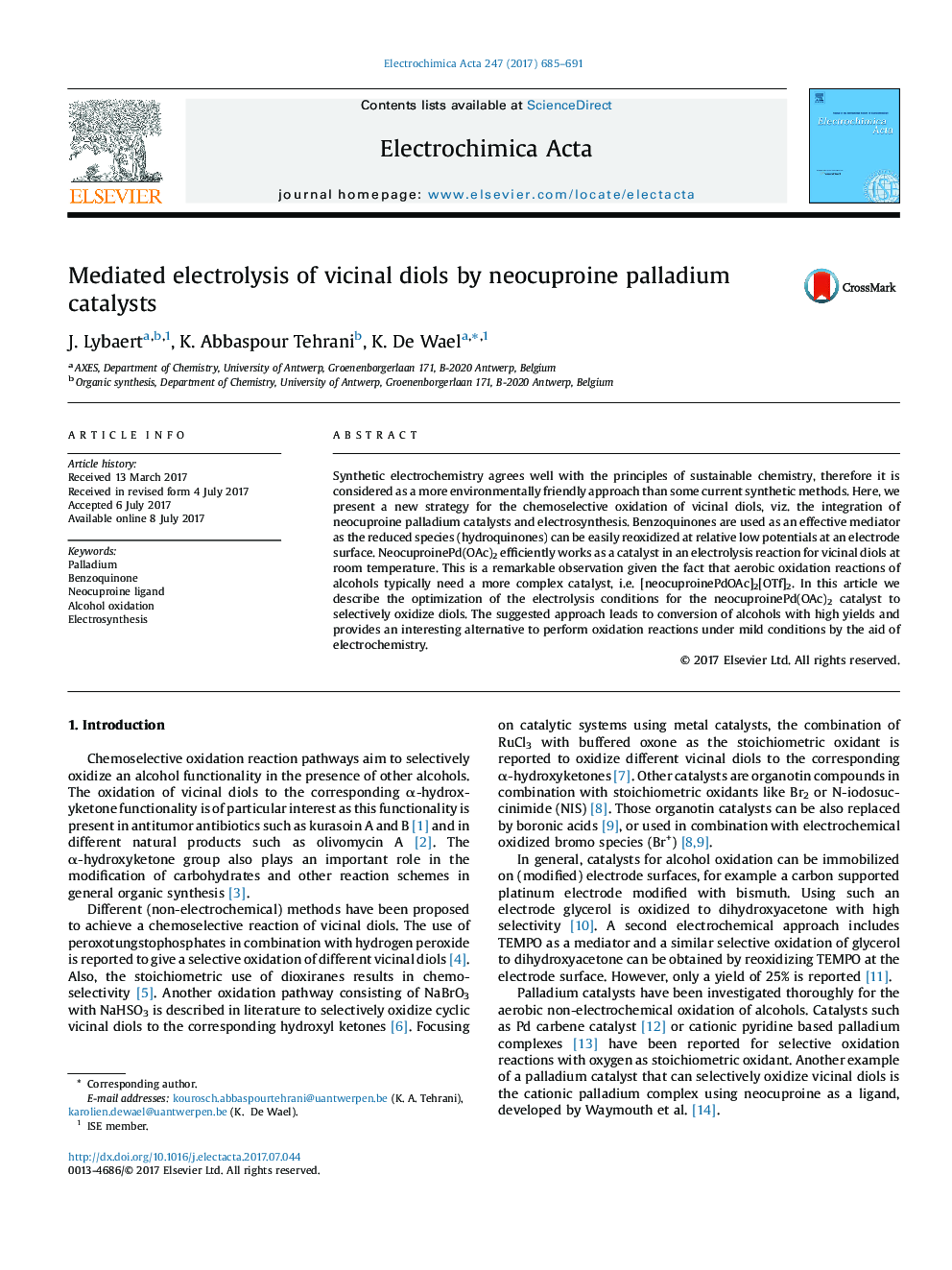| کد مقاله | کد نشریه | سال انتشار | مقاله انگلیسی | نسخه تمام متن |
|---|---|---|---|---|
| 6471078 | 1424110 | 2017 | 7 صفحه PDF | دانلود رایگان |
Synthetic electrochemistry agrees well with the principles of sustainable chemistry, therefore it is considered as a more environmentally friendly approach than some current synthetic methods. Here, we present a new strategy for the chemoselective oxidation of vicinal diols, viz. the integration of neocuproine palladium catalysts and electrosynthesis. Benzoquinones are used as an effective mediator as the reduced species (hydroquinones) can be easily reoxidized at relative low potentials at an electrode surface. NeocuproinePd(OAc)2 efficiently works as a catalyst in an electrolysis reaction for vicinal diols at room temperature. This is a remarkable observation given the fact that aerobic oxidation reactions of alcohols typically need a more complex catalyst, i.e. [neocuproinePdOAc]2[OTf]2. In this article we describe the optimization of the electrolysis conditions for the neocuproinePd(OAc)2 catalyst to selectively oxidize diols. The suggested approach leads to conversion of alcohols with high yields and provides an interesting alternative to perform oxidation reactions under mild conditions by the aid of electrochemistry.
Journal: Electrochimica Acta - Volume 247, 1 September 2017, Pages 685-691
